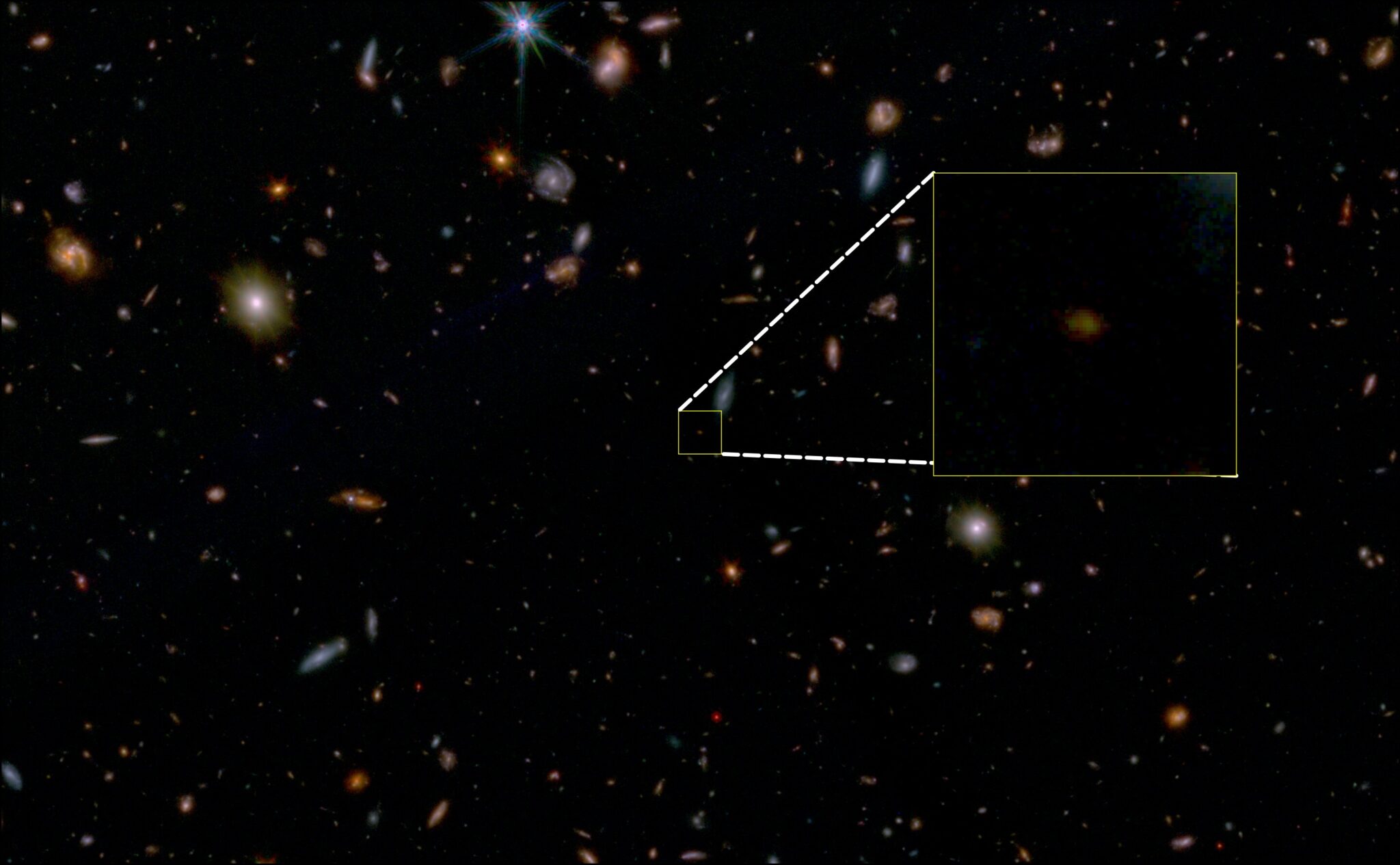Using the James Webb Telescope (JWST), a team of astronomers has discovered the oldest dead galaxy. It stopped forming stars when the universe was only 700 million years old.

The first few hundred million years of the universe’s existence were a very active phase, when many gas clouds collapsed, forming new stars. Astronomers figuratively compare this period with a “buffet” for galaxies.
And the galaxy JADES-GS-z7-01-QU was no exception. JWST’s observations showed that between 610 and 670 million years after the Big Bang, it experienced a short and very intense period of star formation. However, then JADES-GS-z7-01-QU suddenly stopped forming new luminaries.
According to astronomers, they have found dead galaxies in the early universe before, but JADES-GS-z7-01-QU is the oldest and most low-mass of them. It is comparable to the Small Magellanic Cloud, a dwarf satellite galaxy of our Milky Way.
Researchers have several versions of the reasons for stopping star formation in JADES-GS-z7-01-QU. Among them are the activity of a supermassive black hole, the feedback mechanism from star formation, or the overly rapid consumption of gas. They also don’t know if the death of the galaxy is final, or if it subsequently managed to find a “recharge”.
In any case, the discovery of JWST may help astronomers understand how and why galaxies stop forming new stars and whether the factors influencing star formation have changed over the past billions of years.
Earlier, we talked about how JWST studied one of the very first galaxies in the universe.
According to https://phys.org
Follow us on Twitter to get the most interesting space news in time
https://twitter.comne/ust_magazine


